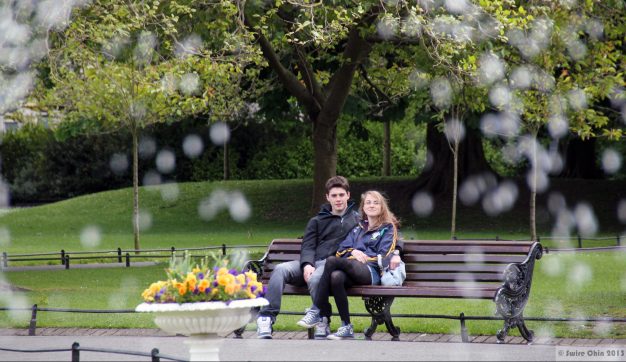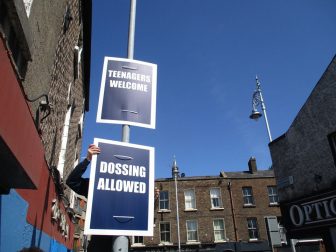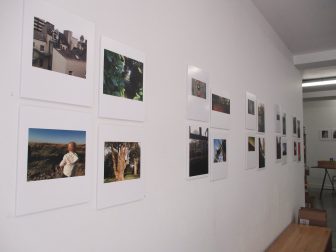
Spatial stories of Dublin’s youth
During winter and spring of this year, a Dublin-based group of young people aged 16 and 17 came together to explore and share their everyday experiences of public space. Researcher Jackie Bourke takes up the story of the stories that became an exhibition.
The urban public realm is a site of importance to teenagers. It is a site of the ‘everyday practice’ of their lives; walking to school, to the shops, or wandering around, hanging out with friends and socialising. In these seemingly unremarkable moments, a sense of identity and a sense of place emerges.
But public space is a highly contested space where teenagers often feel unwelcome. Their bid to socialize is at times misconstrued as anti-social behaviour, and they are moved on. Nonetheless, through their familiarity with their daily routes they develop an expertise in their urban environments. Their engagement with public space is somewhat complex and the knowledge they acquire is richly layered.
 ‘Everyday experience’
‘Everyday experience’
The project, Spatial Stories: An exploration of young people’s everyday experience of public space, sought to interrogate this complexity, to challenge assumptions about the urban public realm, about teenagers and their presence, and to share their perspectives on these issues.
Over the course of seven workshops the participants discussed their everyday use of public space and how they feel they are perceived. Questions around the meaning of ‘public space’ emerged including; How public is public space? What are the rules governing it, and who makes those rules? Who is ‘the public’ in this context, and who is actually welcome in the urban public realm?
Using a walking fieldwork method, the young people explored a number of urban sites to identify welcoming and hostile features which shape their experience. Through photography, drawing, creative mapping techniques and writing, the group captured a considerable breadth of experience.

Exhibition
Spatial Stories culminated in an exhibition of work by the participants which shed some poignant light on young people’s everyday walks through public space. Their photographs and drawings conveyed a sense of playfulness, as well as an acute awareness of architectural detail and urban landscaping, of nature, of environmental neglect, and of the importance of friends and family in their everyday lives.
The exhibition extended into the local neighbourhood with the inclusion of signage designed by the young people. Large format posters with statements such as ‘Teenagers Welcome’, ‘Please Loiter’ and ‘Dossing Allowed’ were placed on lampposts. The posters were an amusing and thought-provoking response to typical negative signage young people encounter.
The spatial stories which unfolded through this project describe a mix of belonging and alienation, and an experience of public space often shaped by a dilemma expressed by the young people as; “alone in the city you feel vulnerable. With a group you are viewed with suspicion”.
Jackie Bourke
Photo: Can Pac Swire
Spatial Stories was developed by the urban researcher, Jackie Bourke and the artist, Dorothy Smith. The project was funded by the Arts Council of Ireland through the Engaging with Architecture stream.




